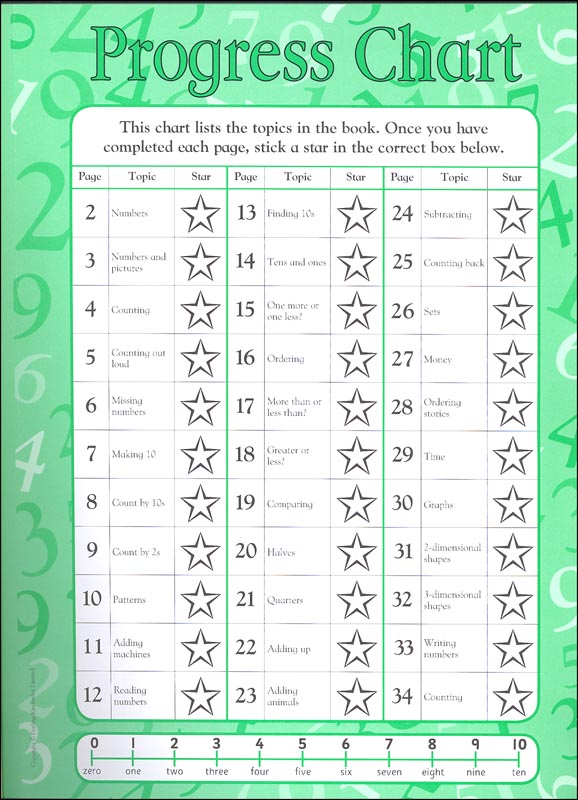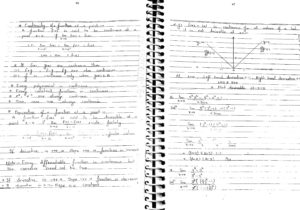- Calculus Made Easy App
- Calculus Made Easy App
- Painless Calculus
- Calculus Made Easy Free
- Calculus Made Easy App Free

| Amateur Radio | Amazon.com |Biology | Books | Chemistry | Data Sheets | Electronics | Math | Microscope | NASA-TV | |
Best Apps A Little Calculus. A LITTLE CALCULUS is a collection of more than 70 interactive topics from a first year calculus. AP Calculus Complete Course (Calculus I). Completely redesigned into an immersive layout which is not only appealing but. Wolfram Multivariable Calculus Course Assistant.
Animal crossing new leaf download mac. Calculus -
Everything you need to know about calculus is on this page.
Caculus made easy is the best calculus app for it made me 100 percent sure of scoring Alpha's (A1) in any maths & caculus exam. Grab your copy & see calculus made easy!!! Calculus made Easy is an app for students wanting to master Calculus the easy way. Using the knowledge of a teacher who has taught for over 38 years with a. Join in as we solve 4 calculus problems that includes derivatives, integrals, limits, and horizontal motion! For other step by step programs visit www.tinspi. Calculus made easy. Sultan global Education. Add to Wishlist. This App teaches you the basics of calculus from the definitions to the application of limits, differential.
Remember this: The whole purpose of calculus is to make very difficult calculations easier. Yes, sometimes down right easy or at least somewhat easier. Calculus is an amazing tool.
Calculus Made Easy App
Learn calculus the easy way -
Purchase a DVD set of easy to follow instructions - You control the speed of learning.
Watching these videos is the easiest and fastest way to learn calculus!
Below are sample video clips from the above Ultimate Calculus DVD's
Couple the DVD's above with a TI-89 calculus calculator and instruction book.

Calculus Made Easy App
You're all set to master 'Calculus'

Scared of calculus? Scared of calculus symbols? No need to be as they are not meant to scare you. They are really very simple once you know how to think about them and know what they represent. For example, often you will see the symbol d or perhaps dx in a formula. Well, d simply means a small amount of something. So, dx simply means a small amount of whatever x represents. Don't try to multiply the two (d and x), they are not meant for that, just think of dx as a small amount of x, period. The symbol dx is called a differential. Also, you might have seen this symbol, called an integral. Now that is scary, right? No, not any more because I know it is simply a tall skinny S. Now how can a tall skinny S scare anyone? If you think of as meaning 'the sum of' (the word sum starts with an S) well, that isn't scary either. I know that 4 is the sum of 2 + 2 already. Let's say you wanted to add up all the little bits of x and determine the sum of all the dx's you have. Now putting these two symbols together,dx simply represents 'the sum of', all the'little bits of x'that you have.This process is often called integration. Integral calculus involves adding up little bits of things. A better definition might be, 'the part of calculus that deals with integration and its application in the solution of differential equations and in determining areas or volumes etc.' For more information and explanation of the definitions of integral and differential calculus see this page - HERE - and more HERE.
The whole purpose of calculus is to make very difficult calculations easier. Yes, sometimes down right easy or usually at least somewhat easier. Most people think calculus is designed to make simple calculations difficult to impossible. But that is only because they really don't speak or understand calculus. It is sort of a foreign language. Learn to understand the language like we did above and calculus gets a lot easier. One example is calculating a transformer rate of change in output voltage at any one given instant. A much easier problem to solve if you use calculus. Who dreamed this calculus stuff up any way? If you want another clear explanation of calculus read this - HERE.

A function is something whereby you can put in some variable and get a different, dependant variable out. So, if f(x)=2x-3, you can put in some value, say 6, and get f(6)=2(6)-3=9.
Differentiation of a function is the generation of another function for which the 'y-value' (value of the dependant variable at a given 'x-value,' or independent variable) of the second is equal to the gradient, or slope, of the first.
For example, take the function y=f(x)=x^2. For any given x, there is a y that is equal to x^2. The derivative of this function happens to be f1(x)=2x, meaning that for a given point on the original curve, its slope can be represented by 2x. So, at x=4, f(x)=4^2=16, and its slope at that point, f1(x)=2(4)=8, or 8 units up for every 1 unit over.
The dy/dx means instantaneous change in y divided by instantaneous change in x. An explanation: Slope is measured by change in y divided by change in x. So between two points on a curve, the y-value of the second minus the y -value of the first, all divided by the x-value of the second divided by the x-value of the first, will give you the slope of the straight line between those two points, also called the secant. But we want the slope at a point, which poses some problems. How can there be any change at one point? Well, there can't, really, but what we can do is find the change between two points which are closer to one another than any finite distance. We can determine through algebra that as you make the distance between them smaller and smaller, the change in y over change in x gets closer and closer to some definite ratio, which is the 'limit' as the distance between them 'approaches zero.' Thus, the 'dy/dx' is that ratio at an infinitely small distance, thereby effectively being the slope at one point
If it's an upper case sigma then that means the sum of a sequence.
It's got everything to do with integrals. An integral is the sum of the rectangles under the curve, change in x (width) times height, the change in width approaches zero and the number of rectangles approaches infinity. Sums are where integrals come from. It's basically 'the sum of all y-values.' Free photo design software for mac.
Painless Calculus
Imagine a voltage source with a angular frequency ω and amplitude A, so as function of time you have V(t) = A*cos(ωt).
Now, replace this with a voltage X(t) = A*exp(ωt). Now, the real voltage can be written as the real part of X(t), being Re(X(t)) = A*cos(ωt).
Using this formalism, you can treat every passive linear component as a complex resistor Z. For lumped devices there are basically three types:
Capacitor with capacity C: Z = 1/jωC
Resistor with resistance R: Z = R
Inductor with inductance L: Z = jωL
Here the number j has the property j² = -1.
Now I'll give an example with three nodes, GND, VIN, VOUT. Between GND and VIN there is a voltage source X(t). Between VIN and VOUT there is a resistor R. Between VOUT and GND is a capacitor C. What is the output voltage as function of input voltage?
This now can be easily solved. We introduce a complex voltage XOUT and XIN.
We have a series connection of two resistors. Using basic circuitry for resistors you find
XOUT = XIN * (ZC / (ZC + ZR)), where ZC is the capacitor's complex resistance and ZR is the resistor's complex resistance.
Now XOUT = XIN *(1/jωC) / (R + (1/jωC)) = XIN / (1 + jωRC)
So, you have XOUT as function of XIN and the angular frequency ω.
The amplification as function of frequency ω can be written as 1/sqrt(1+ω²R²C²). There also is a phase shift, between input and output. That is -arg(1 + jωRC). For small ω (close to DC), the phase shift is close to 0, for high ω, the phase shift is almost 90 degrees.
If you understand complex numbers, then this should be easy to grasp, otherwise it indeed will be very difficult for you to determine transfer functions of capactive and inductive circuits.
The key to understanding these things is
'transfer function'
'complex arithmetic'
'bode plot'
'poles and zeros'
'laplace transform'
Calculus Made Easy Free
Complete calculus course on video - FREE:
Khan Academy
Pre-Calculus (Non-trigonometry pre-calculus topics)
Calculus
Differential Equations
Useful calculus links
| Rules for limits |
| Derivative of a constant |
| Common derivatives |
| Derivatives of power functions of e |
| Trigonometric derivatives |
| Rules for derivatives |
| The antiderivative (Indefinite integral) |
| Common antiderivatives |
| Antiderivatives of power functions of e |
| Rules for antiderivatives |
| Definite integrals and the fundamental theorem of calculus |
| Differential equations |
| Calculus Reference |
| Calculus Resources - Comprehensive!! |
| Calculus Tutorial |
| Calculus Explained with Pictures |
| Calculus Aids - Reference - Solutions - Formulas |
| Calculus Without Tears |
| GREAT CALCULUS Java Applets for Learning |
Calculus (Weisstein and Wolfram Research)
Calculus Problems (Alvirne High School)
Calculus Problems (Mathman)
Calculus Resources (Alvirne High School)
Pre-Calculus - High School Level (Homeworkhelp.com)
Calculus Resources (Fife and Husch)
Calculus Resources (ISLMC) 11-99
Calculus Resources - MV (Math Forum)
Calculus Resources -SV (Math Forum)
Graphics for Calculus (Arnold)
Math By Topic or Strand - Grades 10 - 12 (Math Central)
Math Resources by Topic (AOL - Academic Assistance Center)
Pre-Calculus Resources (Fife and Husch)
Pre-Calculus Resources (Math Forum)
Lexmark x8350 download. Calculus (S.O.S. MATHematics)
Calculus - History and Definitions (Columbia Encyclopedia)
Calculus Basic Formulas (Thinkquest Team 20991)
Preparation for Pre-Calculus and Calculus (Thinkquest Team 20991)
Calculus Edu-Links
Calculus from the MathForum
Calculus Reference Sheet
Dave's Table of Integrals
The Integrator
Karl Hahn's Calculus Tutor
Kevin Brown's Calculus and DiffEq Notes
Learning Calculus
Multivariable Calculus Applets
Quandaries and Queries
Teacher2Teacher
Tutor 2000
Visual Calculus
MIT Open Courseware
Calculus
Calculus 1 & 2
Calculus Made Easy App Free
Return to www.101science.com home page.
